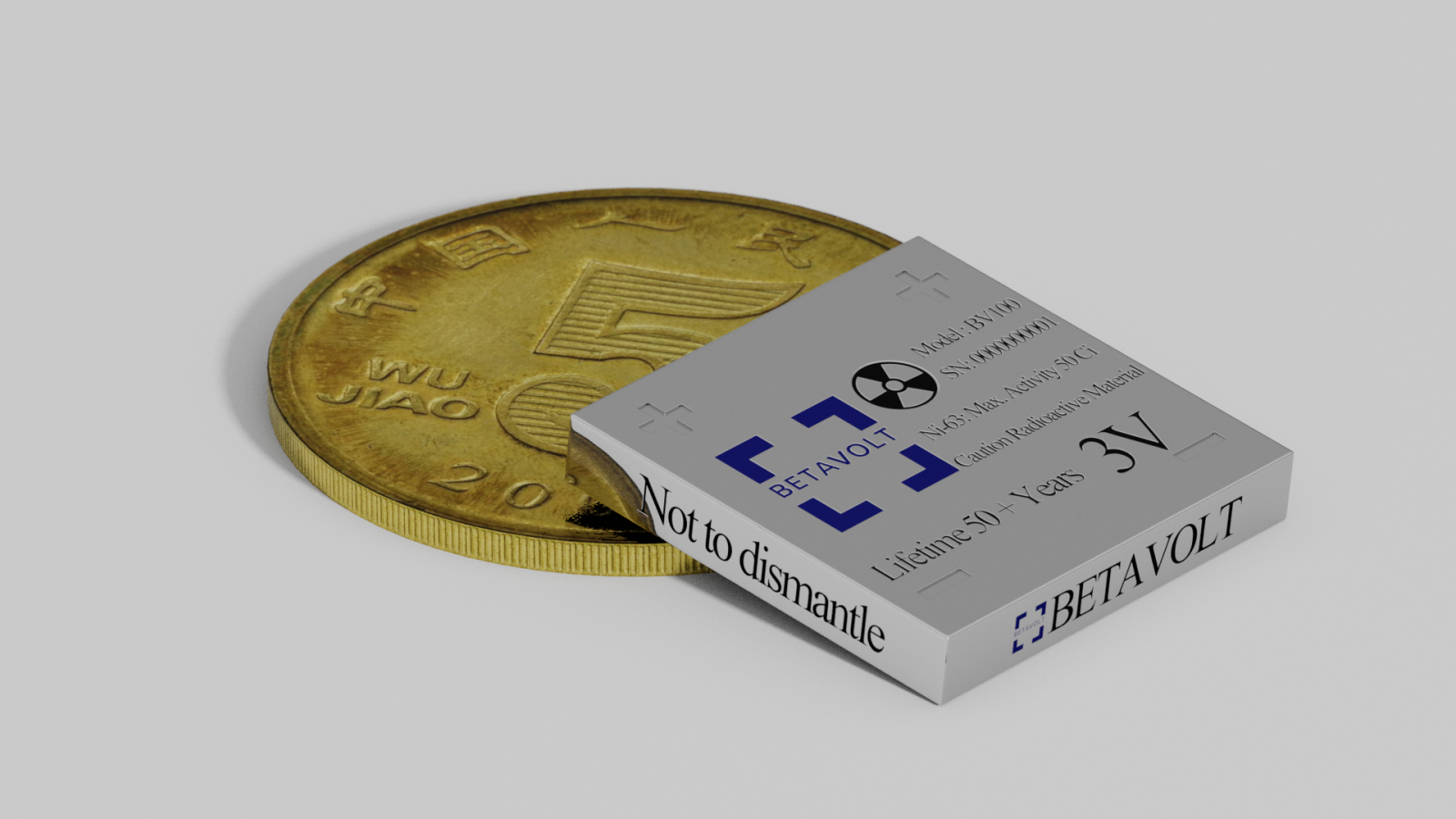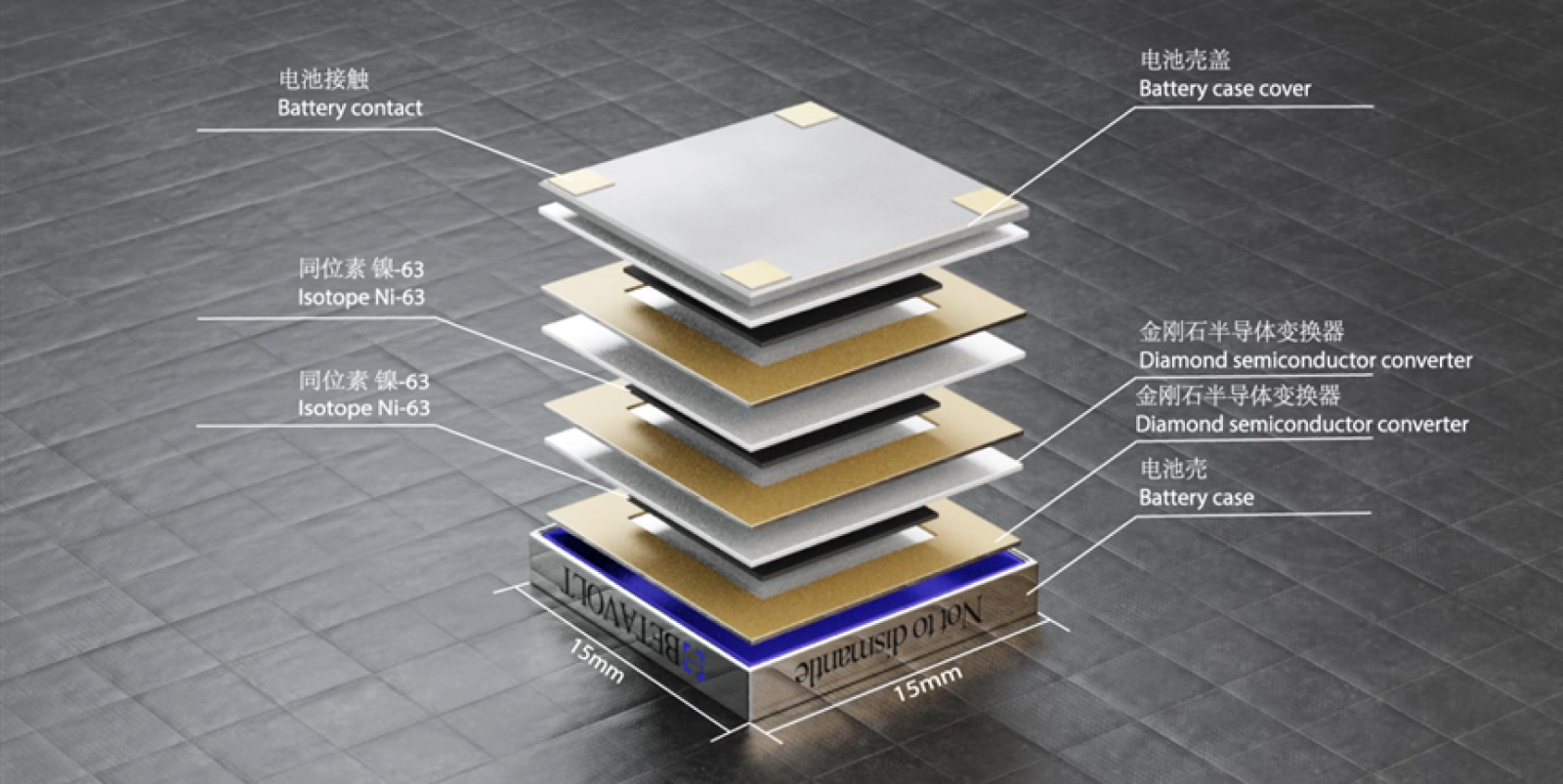Follow us on Google News (click on ☆)

Credit: BetaVolt
The innovation lies in the integration of a semiconductor layer placed between two thin diamond plates to capture and direct these electrons. Semiconductors, being midway between conductors and insulators, allow for precise control of electron flow. This technology thus offers significantly greater longevity and energy density compared to conventional lithium-ion batteries.
However, Juan Claudio Nino, a materials scientist at the University of Florida, raises questions about the current power output of this battery. According to him, despite its impressive durability, the BV100 only delivers 0.01% of the electricity needed to power a mobile phone. Current applications therefore appear to be limited to low power devices, such as pacemakers or passive wireless sensors.

Credit: BetaVolt
Safety is also a crucial concern. The use of radioisotopes requires effective shielding to protect against harmful radiation, especially in medical applications or mobile telephony. The battery's design therefore incorporates shielding, using lead or tungsten, which is tailored to the nature and quantity of the radioactive isotope used.
BetaVolt plans to release a 1-watt version of its battery in 2025, which is better suited to the energy consumption of mobile phones that ranges from 2 to 6 watts. Additionally, the company is exploring the use of other nuclear isotopes, such as strontium-90, promethium-147, and deuterium, offering lifespans ranging from two to thirty years in devices.
The road to widespread commercial application remains fraught with obstacles, notably in terms of safety and power output.